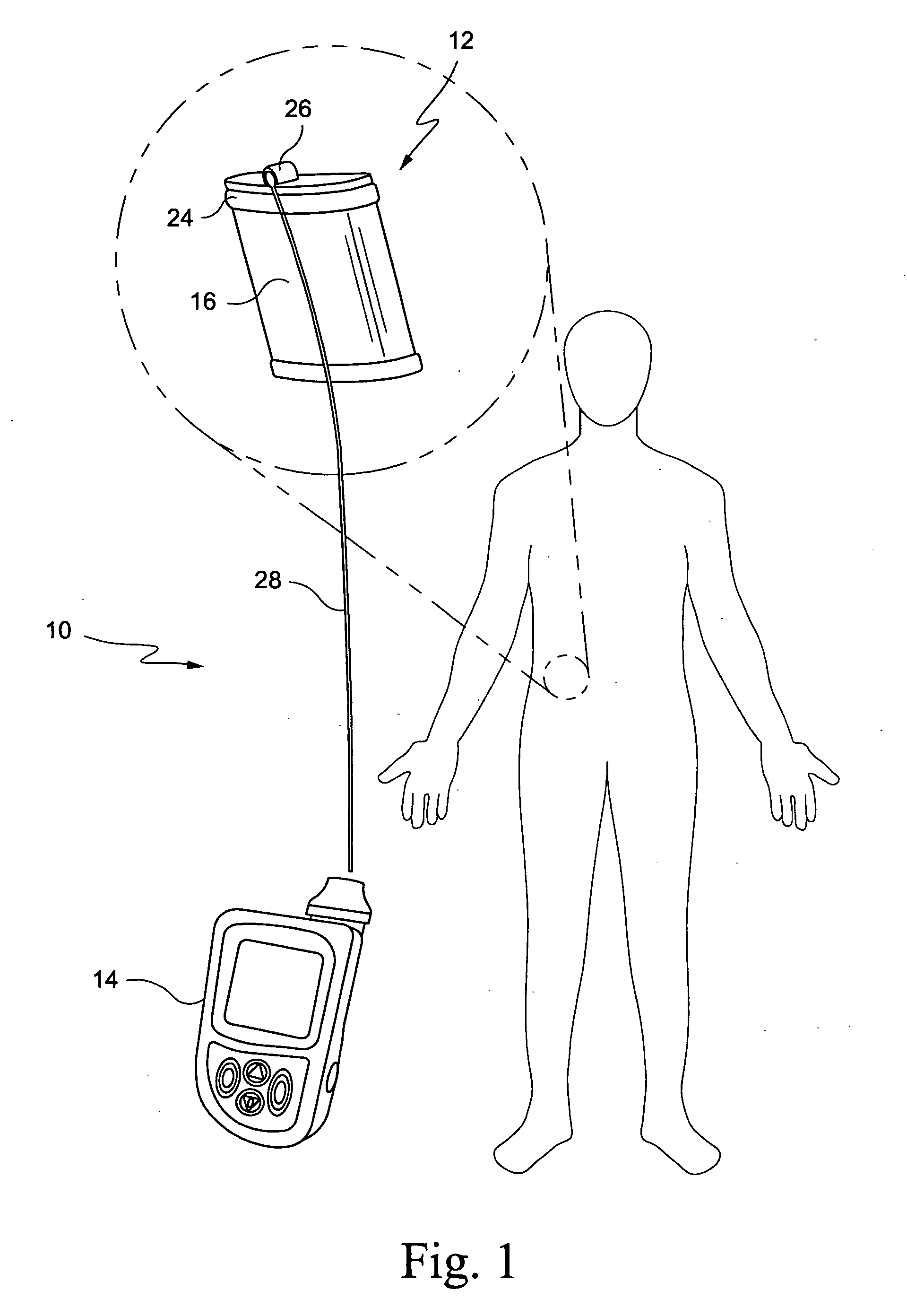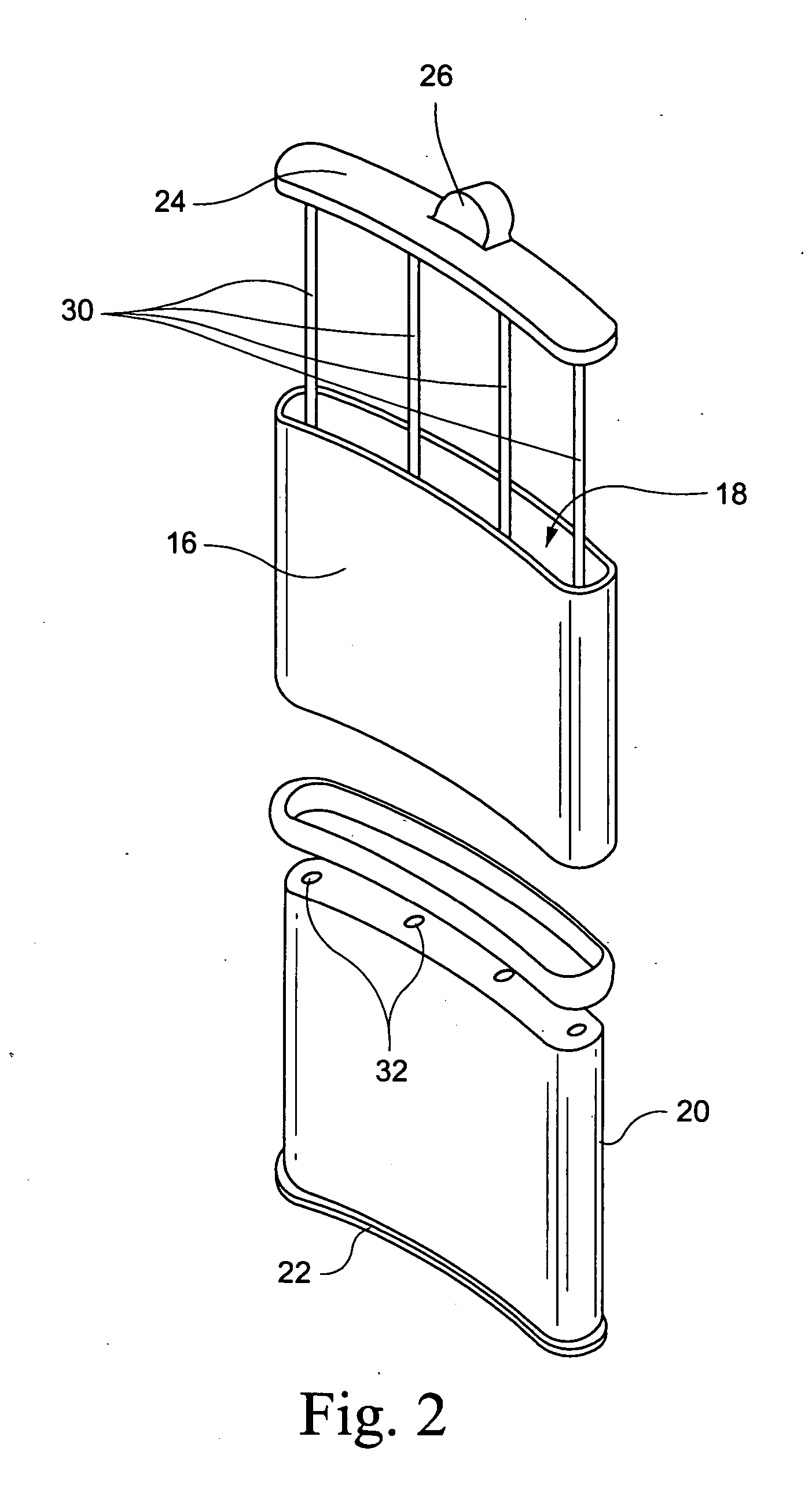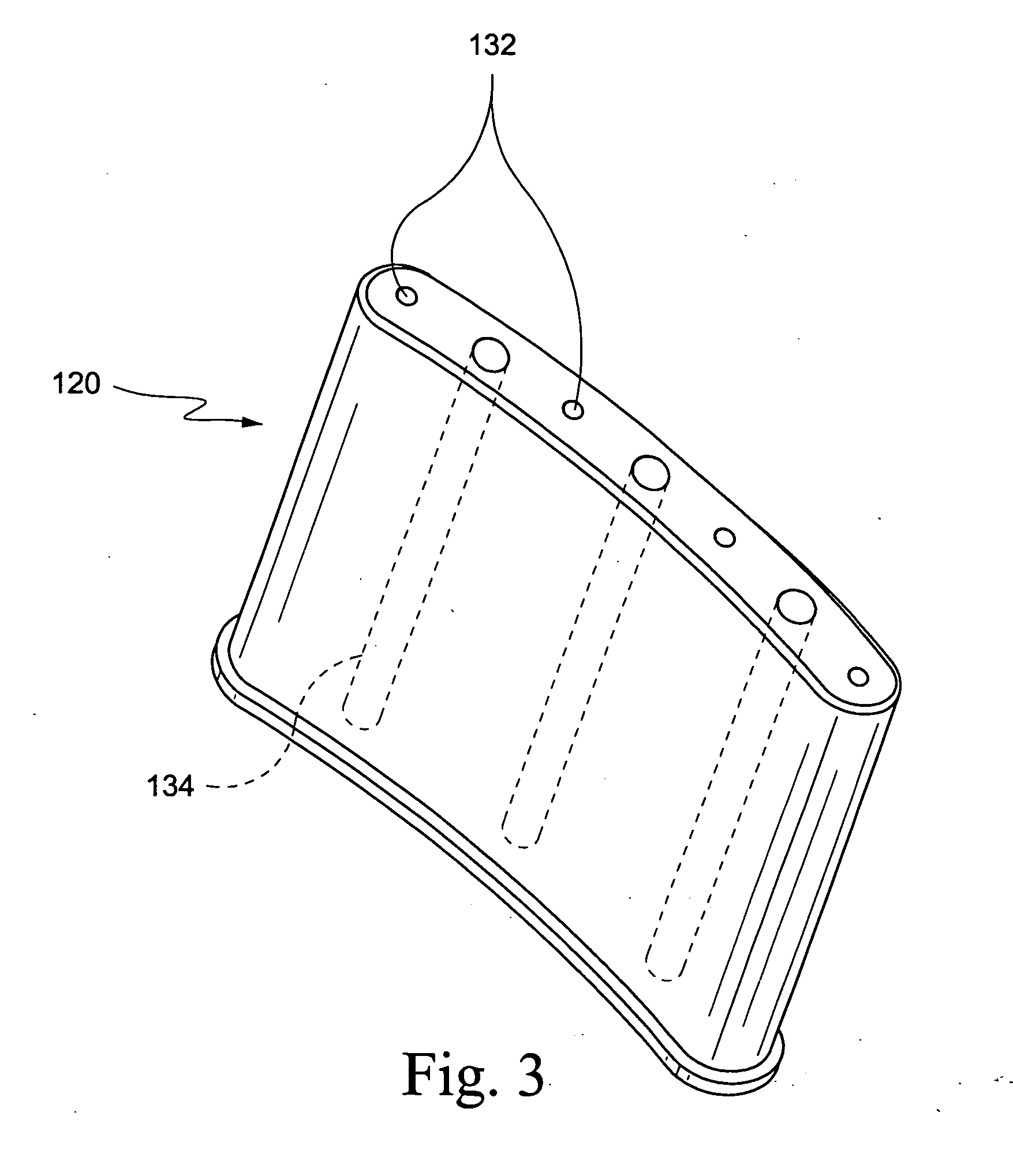Hybrid device for cell therapies
a cell therapy and hybrid technology, applied in the field of hybrid devices for cell therapies, can solve the problems of insufficient co-transplantation of sertoli cells to protect the therapeutic cell type, cells may not thrive, and invaded cells will be attacked, so as to facilitate the addition of factors, facilitate engraftment, and facilitate cell survival
- Summary
- Abstract
- Description
- Claims
- Application Information
AI Technical Summary
Benefits of technology
Problems solved by technology
Method used
Image
Examples
Embodiment Construction
[0018] An embodiment of a hybrid device 10 embodying the invention is illustrated by way of example in FIGS. 1 and 2. The hybrid device is comprised of a an implantable device 12 containing a therapeutic tissue / cell product, either at the time of implantation or in a second stage (after pre-vascularization of the device), and an external pump or other reservoir 14 for delivery of selected nutrients, growth factors and immunomodulatory / immunosuppressive substances to improve vascularization, survival, function and growth of the implanted tissues / cells. The implantable device 12 includes a porous outer peripheral wall 16 defining an inner space or cavity 18. The porous outer wall is perforated sufficiently so as to allow for capillaries to grow through the perforations to provide a vascular bed for promoting engraftment of transplanted cells, as described hereinbelow. Thus, the perforations may be, e.g, 300-800 micron, more preferably 400-700 micron. By way of example, a stainless ste...
PUM
 Login to View More
Login to View More Abstract
Description
Claims
Application Information
 Login to View More
Login to View More - R&D
- Intellectual Property
- Life Sciences
- Materials
- Tech Scout
- Unparalleled Data Quality
- Higher Quality Content
- 60% Fewer Hallucinations
Browse by: Latest US Patents, China's latest patents, Technical Efficacy Thesaurus, Application Domain, Technology Topic, Popular Technical Reports.
© 2025 PatSnap. All rights reserved.Legal|Privacy policy|Modern Slavery Act Transparency Statement|Sitemap|About US| Contact US: help@patsnap.com



